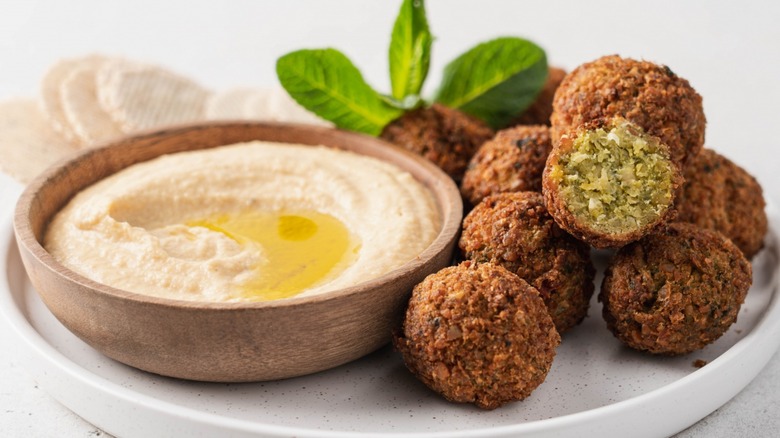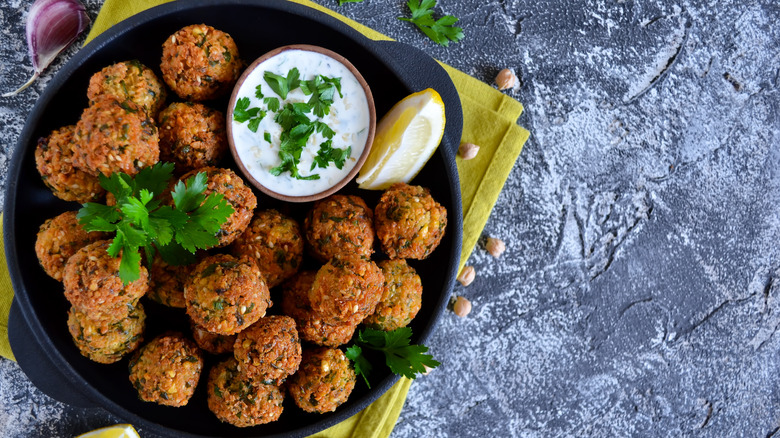Expert Explains Why Falafels May Be The Perfect Veganuary Meal
It's January, and you know what that means: It's officially time to test out those health-based resolutions. If you're looking for one that's easier and more productive than pledging a year-long goal — which can seem too daunting and thus easily doffed in a matter of weeks — there are other ways to work on the newer, healthier you. A trend that's been gaining traction in the last few years is to try a month-long health sprint that lets you test the waters without committing to a whole year of anything. Challenges like "Dry January" break the goal down into something short and achievable (an important factor for success, per Better Up), and then if you want to continue after January, you're already coming off a win.
Another popular short-term New Year's resolution goal popping up in the last few years is Veganuary. Originally started as part of a U.K. charity campaign, people pledge to try a vegan lifestyle for the first month of the year (per Cleveland Clinic). This lifestyle can be healthier for both you and the planet, as plant-based foods are low in saturated fats and cholesterol and packed with nutrients, and eating plant-based products can help combat climate change. But two big issues regular meat eaters have when they try out a vegan diet are learning what to cook and getting enough protein (per Columbia) — and that's where falafel comes in.
One alternative protein: falafel
Falafel makes a great protein-rich vegan meal. The deep-fried chickpea dish, which is believed to come from the Coptic phrase "pha la phel," meaning "of many beans," may date all the way back to ancient Egypt (per Egyptian Streets). While some theorize it may have been developed by Coptic Christians as the world's first meat alternative during Lent, ancient Egyptian paintings may depict the production of falafel — and remains of fava bean pastes, which are used in the Egyptian form of the classic Middle Eastern dish rather than chickpeas, have been found in tombs. In Egypt, the dish today is commonly known as "taameya," meaning "a little piece of food."
Whichever name you call it, its many Middle Eastern variations make it a versatile meal, as Falafel Guys co-owner Abdalla Gouda told Mashed. In Egypt, the dish is made with fava beans instead of chickpeas, and it's often served with pickles and pita bread (also known as Arabic or Syrian bread). Meanwhile, if you order falafel in Palestine, you're likely to be served the balls covered in chopped onion, fresh cilantro, and pomegranate seeds. All over the Middle East, the dish is generally served with hummus and tahini sauce, Gouda says. Its versatility makes it an easy and delicious choice for anyone new to preparing vegan meals.
"Falafel is one of the best meat substitutes," explained Gouda. "It's a great dish to encourage people to eat more plant-based products." Nutritionally, falafel is rich in fiber and complex carbs, and it's always high in protein due to being largely chickpea paste. It's also low in cholesterol and saturated fat, and — if using a homemade falafel recipe — low in sodium, so you can grab a plate and keep your healthy Veganuary right on track.

